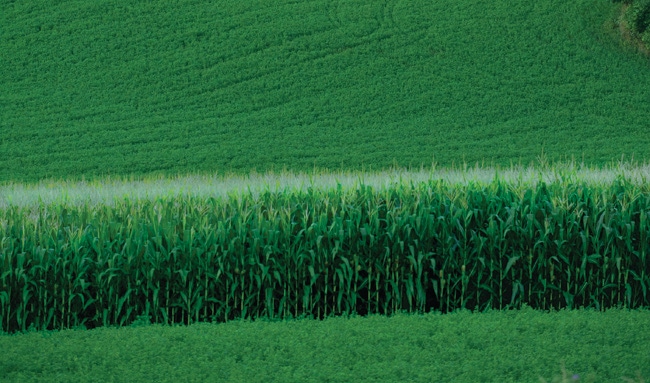
Uncertainties abound for corn and soybean production in 2013. Potential drought, crop insurance payouts, and commodity prices are just a few major unknowns. To help growers prepare for the next year, Farm Industry News put together a buyer’s forecast of interest rates and the costs of production inputs and land. Featured here is an overview of common farmland myths.The rest of the input forecasts may be found here:Crop protection Seed Fertilizer Interest ratesFarmland Fuel
December 3, 2012

They’re not making any more farmland, right? Wrong.
“Don’t believe that myth,” advises Mike Boehlje, an agricultural economist at Purdue University.
The Corn Belt hasn’t expanded as if by magic. But the red-hot commodity prices of recent years have stimulated a dramatic increase in new land coming into production around the globe, Boehlje says. In addition, productivity of existing farmland continues to climb as high prices justify more intense management.
All of which means that the globe’s agricultural productive capacity is increasing — and it won’t be shrinking any time soon. There are other myths to take on, according to Boehlje. Contrary to recent history, agricultural exports won’t continue to increase as dramatically as in recent years, although they are likely to remain relatively strong. Ethanol demand won’t continue to grow topsy-turvy either, having reached a plateau based on achieving production needed for the 10% ethanol blend mandate.
“This should result in some moderation of the excitement about continuing rising land values,” Boehlje says.
Big acreage, productivity hikes
Over the past six years, 130 million acres of new cropland have begun to be farmed worldwide, just 3% of which is in the U.S. Much of new farmland is in Brazil and Argentina, the Ukraine, Russia, the Balkan countries of southeastern Europe, and parts of Asia and Africa, Boehlje says.
“It is quite likely there will be close to 30 million acres added again next year,” he adds. The big land development boom will continue until supply and demand reach equilibrium and prices and profit margins fall enough to discourage new investment.
Although the new land generally isn’t up to Midwest productivity standards, that will improve with time, assuming crop prices are high enough to provide the incentive, Boehlje says. The new ground will be in production for the long haul and is likely to hold down commodity prices over time.
“The important point is when you bring land into production, because agriculture is a high fixed-cost industry, that land will stay in production even though prices might decline,” he says. “Supply response is very lethargic to lower prices. It will not go out of production nearly as rapidly as it came into production.”
Defensive strategies
Although worldwide agricultural productivity could take some of the bloom off the U.S. farmland market, Boehlje is not predicting a decline in U.S. farmland values. “I would be surprised if that happens,” he says. “We are not predicting a 1980s phenomenon. We are seeing a soft landing for land prices as well as profitability.”
That scenario could fall on its face if recent 20%-plus annual price hikes continue for a another year or two, especially if low interest rates don’t hold steady until 2015 as currently projected. “If that were to occur, there could be risk of downward adjustment,” Boehlje says.
To prepare for likely lower profits, Boehlje suggests holding the line on new borrowing and working to boost working capital.
About the Author(s)
You May Also Like





